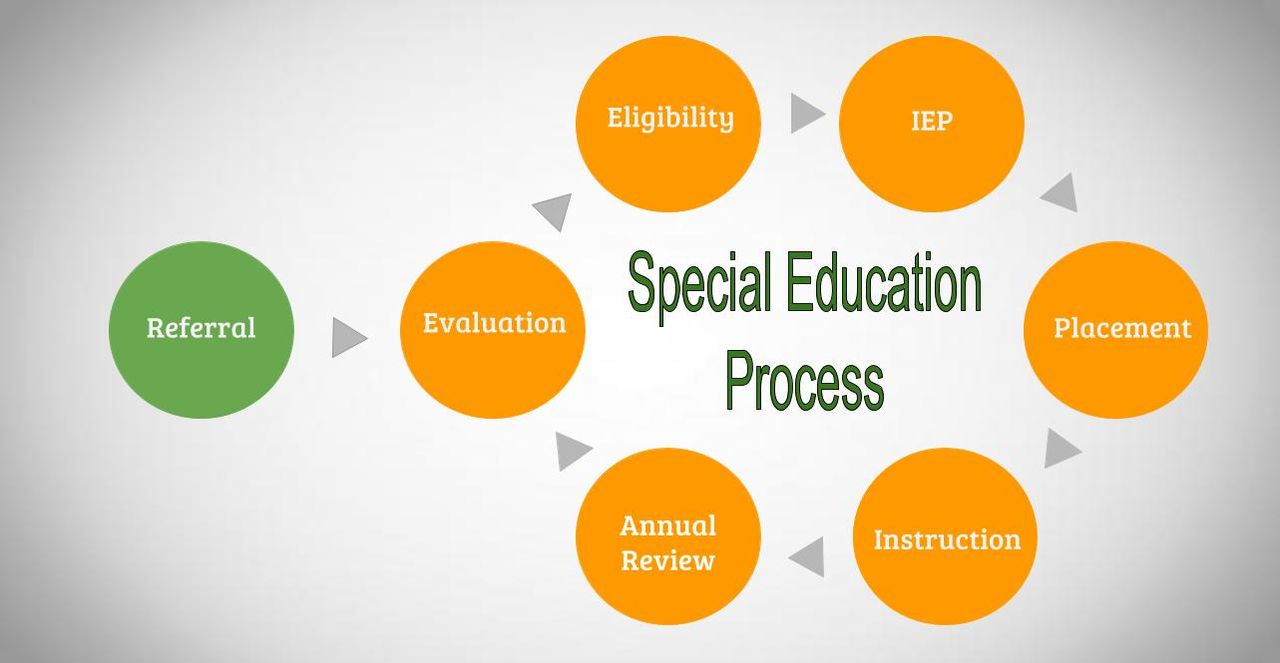Parents' IEP Reference Guide

During the Individualized Educational Plan (IEP) Meeting
The U.S. Department of Education states:
- Step 1. IEP meeting is held and the IEP is written.
- The IEP team gathers to talk about the child's needs and write the student's IEP. Parents and the student (when appropriate) are part of the team. If the child's placement is decided by a different group, the parents must be part of that group as well.
- Before the school system may provide special education and related services to the child for the first time, the parents must give consent. The child begins to receive services as soon as possible after the meeting.
- If the parents do not agree with the IEP and placement, they may discuss their concerns with other members of the IEP team and try to work out an agreement. If they still disagree, parents can ask for mediation, or the school may offer mediation. Parents may file a complaint with the state education agency and may request a due process hearing, at which time mediation must be available.
- Step 2. Services are provided.
- The school makes sure that the child's IEP is being carried out as it was written. Parents are given a copy of the IEP. Each of the child's teachers and service providers has access to the IEP and knows his or her specific responsibilities for carrying out the IEP. This includes the accommodations, modifications, and supports that must be provided to the child, in keeping with the IEP.
When Writing the IEP:
According to the U.S. Department of Education:
To help decide what special education and related services the student needs, generally the IEP team will begin by looking at the child's evaluation results, such as classroom tests, individual tests given to establish the student's eligibility, and observations by teachers, parents, paraprofessionals, related service providers, administrators, and others. This information will help the team describe the student's "present levels of educational performance" -in other words, how the student is currently doing in school. Knowing how the student is currently performing in school will help the team develop annual goals to address those areas where the student has an identified educational need.
The IEP team must also discuss specific information about the child. This includes:
- the child's strengths;
- the parents' ideas for enhancing their child's education;
- the results of recent evaluations or reevaluations; and
- how the child has done on state and district-wide tests.
It is also important that the discussion of what the child needs be framed around how to help the child:
- advance toward the annual goals;
- be involved in and progress in the general curriculum;
- participate in extracurricular and nonacademic activities; and
- be educated with and participate with other children with disabilities and nondisabled children.
Based on the above discussion, the IEP team will then write the child's IEP. This includes the services and supports the school will provide for the child. If the IEP team decides that a child needs a particular device or service (including an intervention, accommodation, or other program modification), the IEP team must write this information in the IEP. As an example, consider a child whose behavior interferes with learning. The IEP team would need to consider positive and effective ways to address that behavior. The team would discuss the positive behavioral interventions, strategies, and supports that the child needs in order to learn how to control or manage his or her behavior. If the team decides that the child needs a particular service (including an intervention, accommodation, or other program modification), they must include a statement to that effect in the child's IEP.